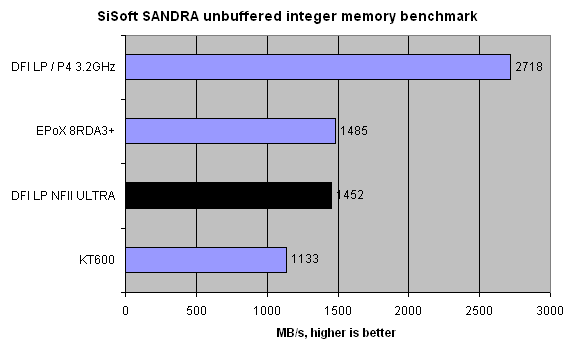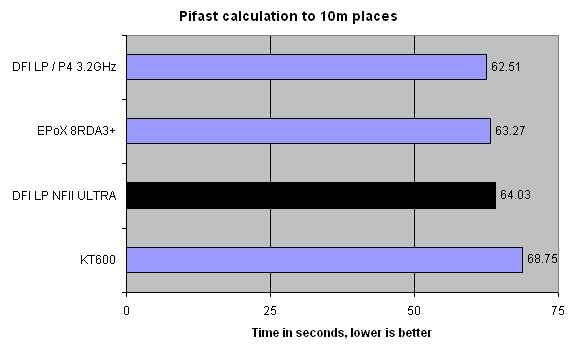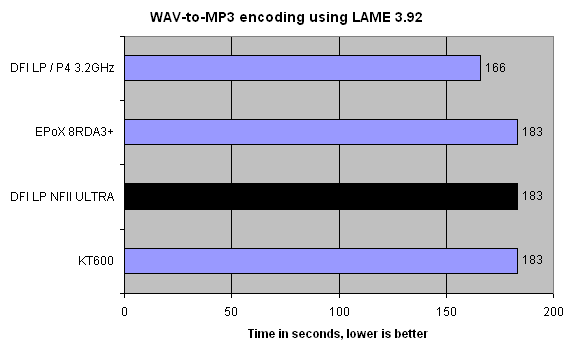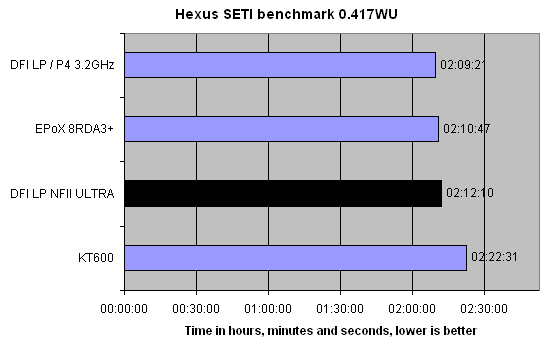Benchmarks I
The DFI NFII ULTRA has
followed much in the vein of its Intel counterpart. Both boards are
brimming with useful features. The nForce2 version, though, outdoes the
Canterwood by specifying 3-port FireWire and dual LAN. Looks good so
far. On to the HEXUS round of benchmarks which are started off, as always, with
SiSoft SANDRA's unbuffered memory estimation.

Ignore the quad-pumped P4
result for a second and concentrate on the three AMD runners. SANDRA
asserts that the DFI has a smidge less bandwidth than the EPoX nForce2
Ultra 400 and lots more, as expected, than the single-channel KT600.
Real-world benchmarks are
more important to us. Pifast is pretty real, we reckon. Calculating the constant Pi
requires masses of raw speed and fast data turnaround. The benchmark is
set to 10m places. v4.1 of Pifast is used.

0.76s isn't all
that much in absolute terms between the nForce2-powered boards, yet it's still outside the standard
performance deviation shown by the EPoX 8RDA3+ board. The DFI is still streets ahead of the
KT600, though.

Pure clock speed is more
important than any other factor in this benchmark. Prior knowledge of
this fact allows us to see why the three AMD runners bunch up together.

SETI's great at putting
potential bandwidth to good use. The memory controller's getting
hammered for the entire duration of the benchmark, so it's important
that it's as efficient as possible. Dual-channel memory doesn't do a
whole lot for the double-pumped AMD XP CPU, yet its gains over the
single-channel KT600 are painfully obvious.









